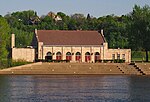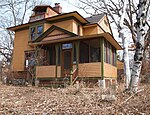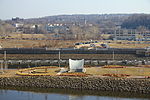Anthony Yoerg Sr. House
Houses completed in 1875Houses in Saint Paul, MinnesotaHouses on the National Register of Historic Places in MinnesotaNational Register of Historic Places in Saint Paul, MinnesotaSecond Empire architecture in Minnesota

The Anthony Yoerg Sr. House is a historic house in Saint Paul, Minnesota, United States. It was the home of Anthony Yoerg (1816–1896), a Bavarian immigrant who constructed Minnesota's first brewery; the house is located high on the bluffs and the brewery was located just below the house on the lowlands in Saint Paul's West Side neighborhood. It is listed on the National Register of Historic Places.The house was completed in 1875 by Monroe Sheire, and is one of the few surviving works by Sheire. One other surviving work is the Alexander Ramsey House, completed in 1872.
Excerpt from the Wikipedia article Anthony Yoerg Sr. House (License: CC BY-SA 3.0, Authors, Images).Anthony Yoerg Sr. House
West Isabel Street, Saint Paul West Side
Geographical coordinates (GPS) Address Nearby Places Show on map
Geographical coordinates (GPS)
| Latitude | Longitude |
|---|---|
| N 44.933333333333 ° | E -93.094722222222 ° |
Address
West Isabel Street 239
55107 Saint Paul, West Side
Minnesota, United States
Open on Google Maps











